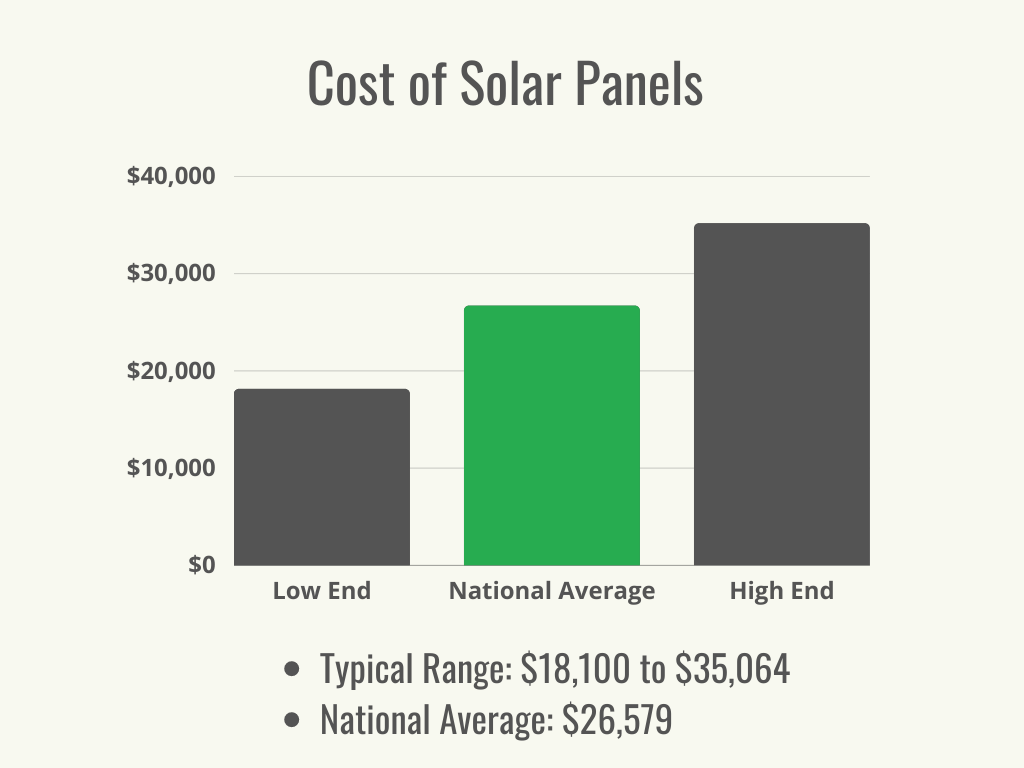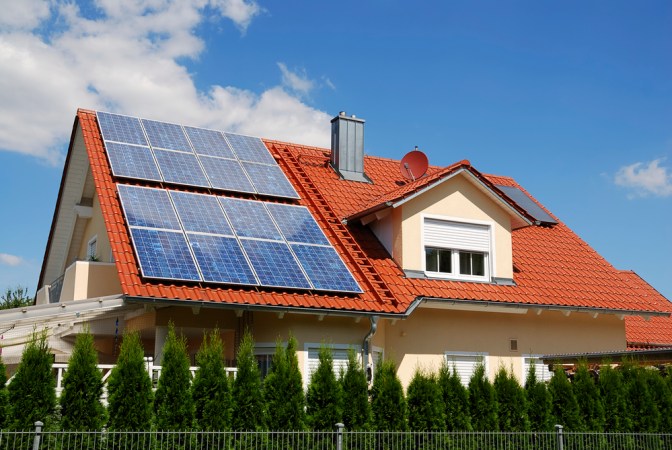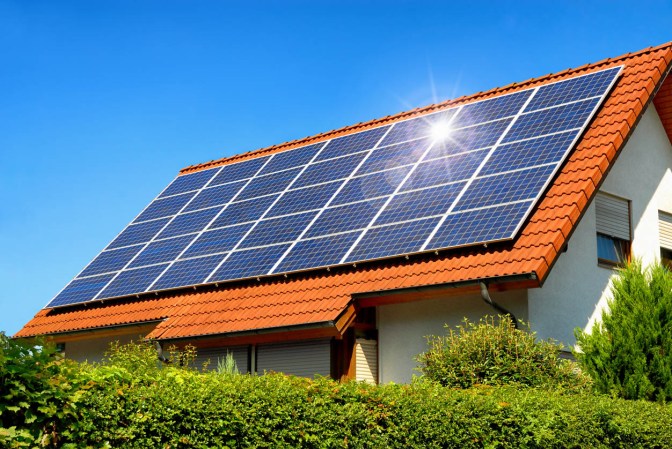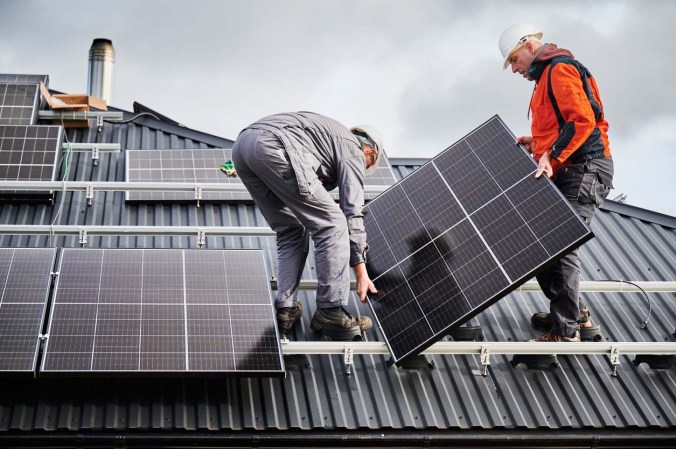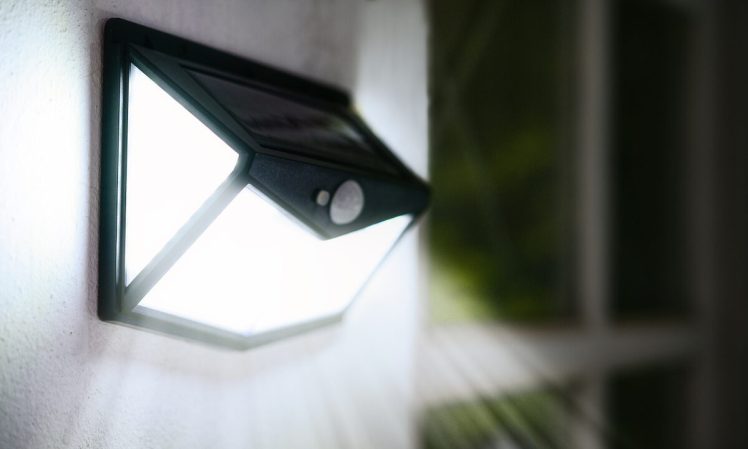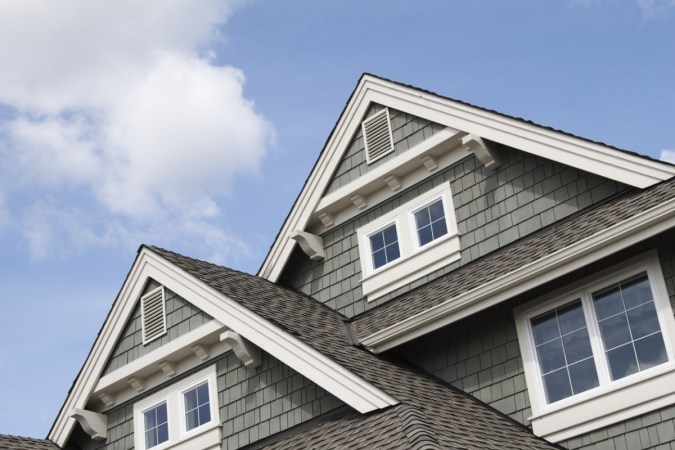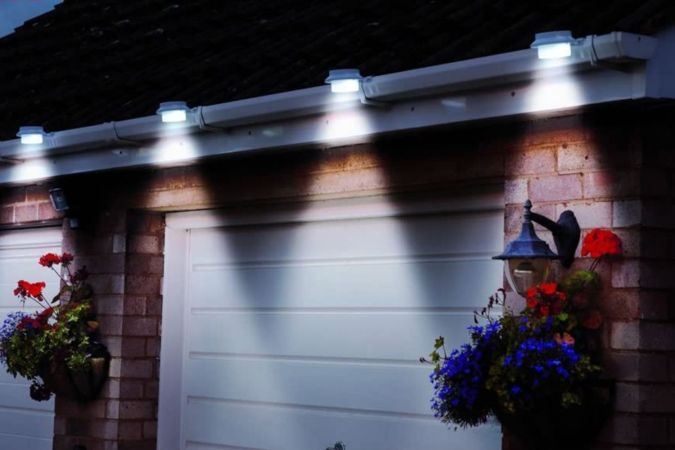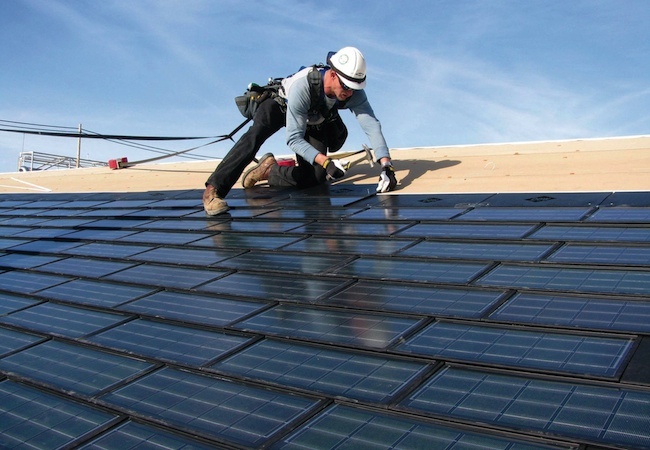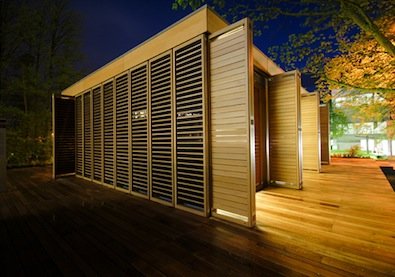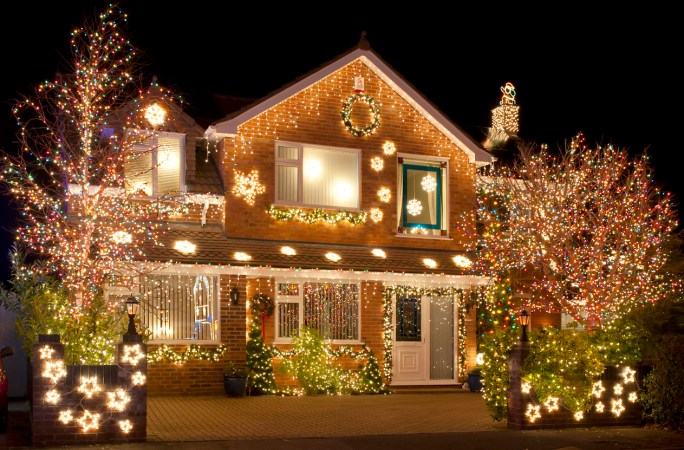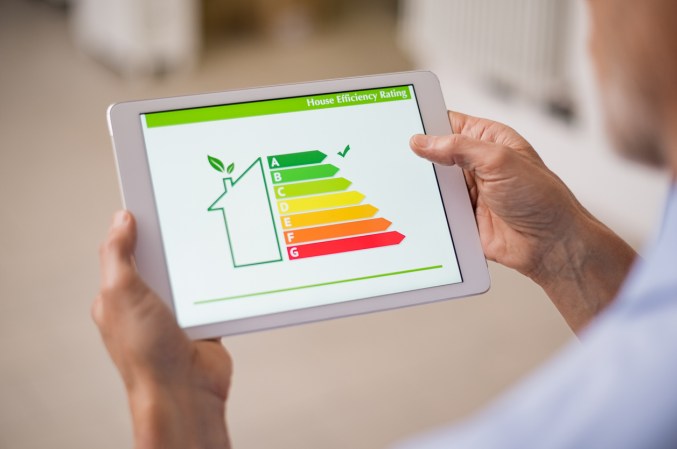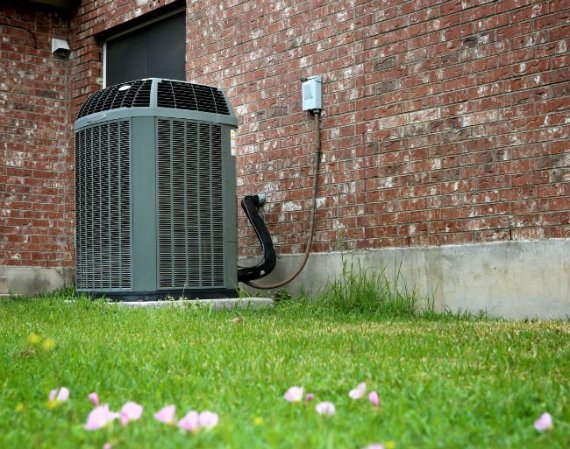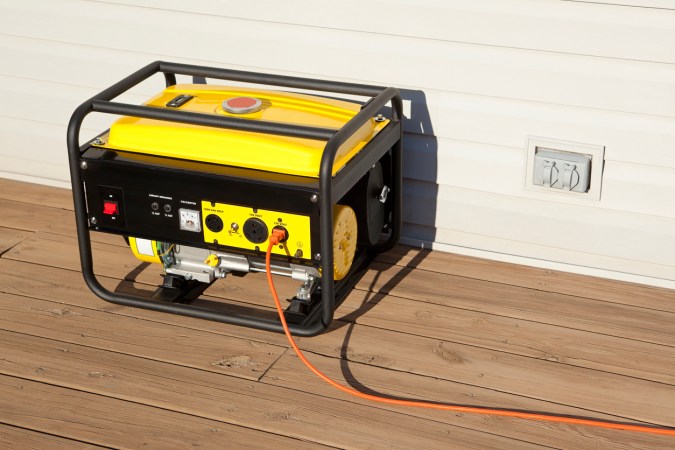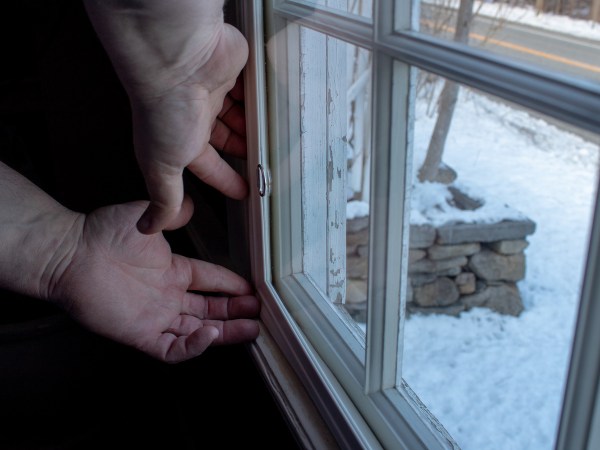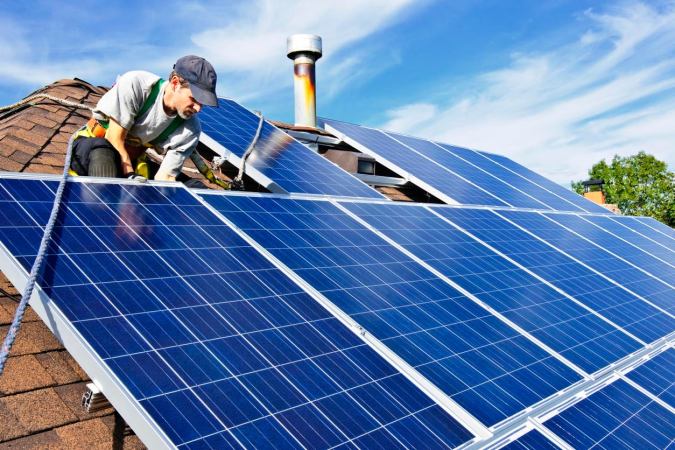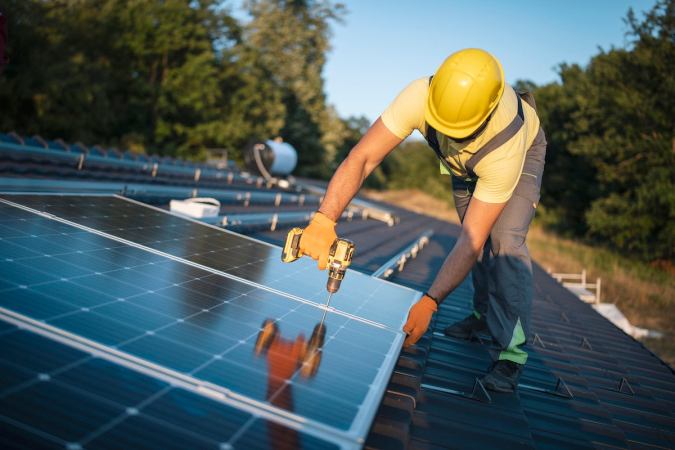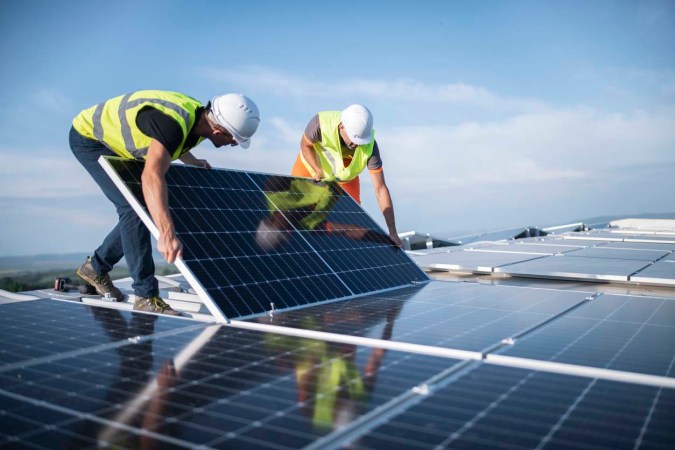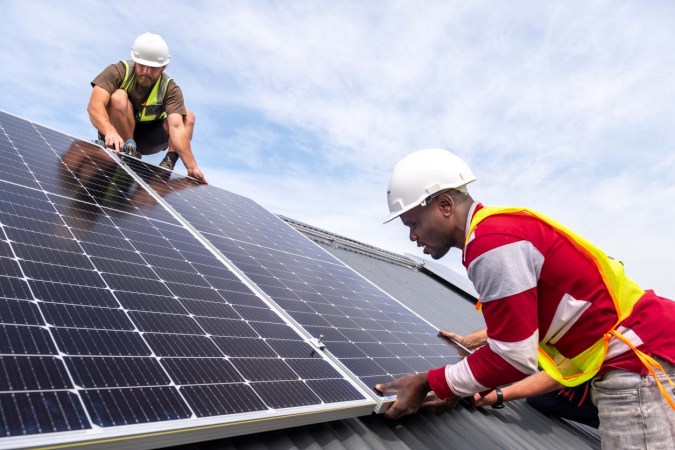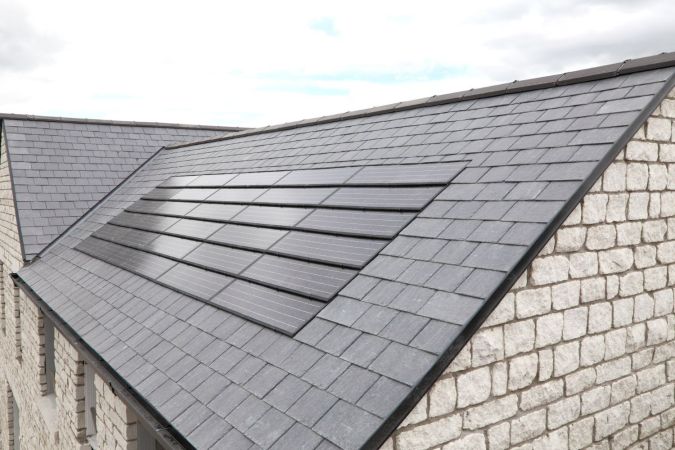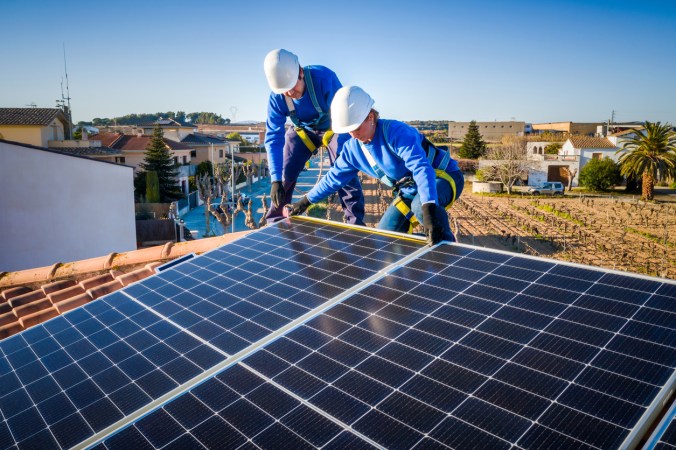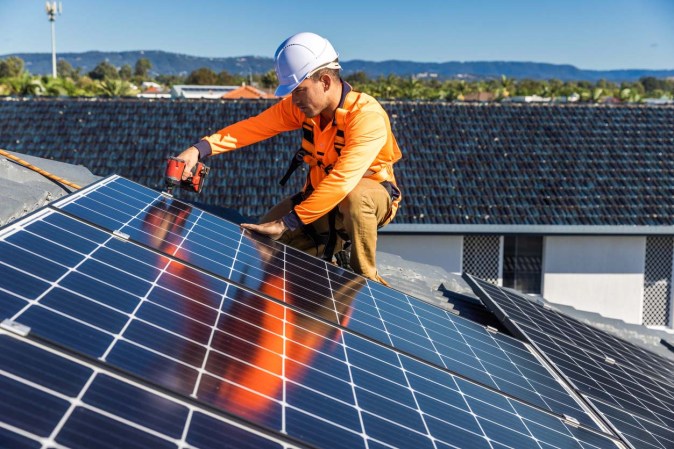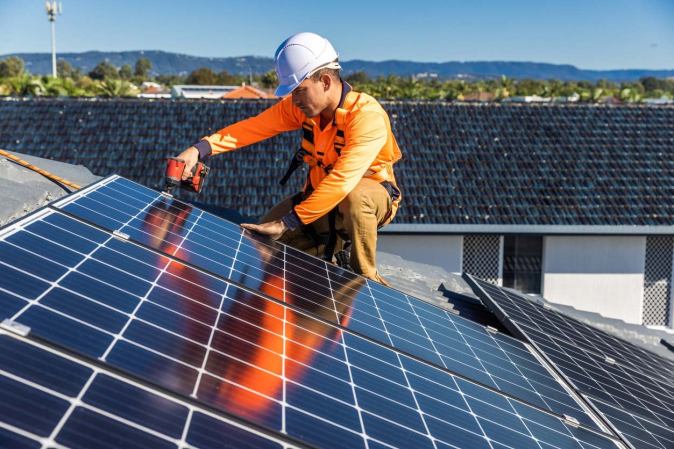We may earn revenue from the products available on this page and participate in affiliate programs. Learn More ›
Highlights
- The typical price range for solar panels is from $18,100 to $35,064, with a national average cost of $26,579.
- The cost to install solar panels depends on the size, shape, and condition of the roof; the number, type, and size of panels needed; the type of system being installed; the type of mount used; the solar panel manufacturer; the installation location; the amount of sunlight exposure the roof has; the home’s geographic location; and the cost of labor, permits, and inspections.
- Homeowners who install solar panels on their home can enjoy numerous benefits, such as a reduced carbon footprint, lower utility bills, tax breaks, and a high return on investment.
- Although a homeowner can save 15 percent by installing solar panels themselves, it’s generally not recommended—the average homeowner won’t have the experience and knowledge required for this project, and DIY installation could void the solar panels’ warranty.
There are plenty of good reasons a homeowner may want to install solar panels on their roof: lower utility bills, a significant return on investment, tax breaks, and a reduced carbon footprint. But how much do solar panels cost? According to HomeAdvisor and Angi, solar panels cost between $18,100 and $35,064, with the national average at $26,579. This comes out to $2.50 to $3.50 per watt, where most solar power systems range from 3kW (kilowatt) to 10kW on average.
Homeowners can expect to pay from $0.70 to $1.50 per watt for solar panels for home use. Labor costs—typically up 15 percent of the overall cost—can average around $0.50 per watt, and the price can vary widely due to differences in system sizes. Prices for solar roof panels ultimately depend on a home’s location, the labor involved, permit and inspection fees, and the type of solar panel system installed, all of which are explored in detail in this cost guide. Many homeowners consider the investment cost of solar panels worth it given the savings and benefits from channeling the sun to power their home. Customers can ask the best solar panel installation companies, such as SunPower or ADT Solar, for a quote to help guide their budget.
Factors in Calculating the Cost of Solar Panels
Calculating the cost of solar panels involves several factors. Prices can differ due to location and how much energy is needed to power heating and cooling units. Whether solar panels are installed on the roof or on the ground will also change the installation and labor costs. Additional factors include permit and inspection fees, on-grid versus off-grid systems, the size and type of solar panel system, equipment, and operational costs.
Roof Size, Shape, and Condition
The size and shape of the roof will directly affect the average cost of solar panels. A smaller roof may not accommodate the number of solar panels needed to provide the required energy. Labor costs can vary because of the roof’s pitch and size, and the type of mounting equipment and materials will depend on the size, shape, and condition of the roof. Before installing solar panels, homeowners will need to make sure their roof is in good condition; solar panel removal and reinstallation can be costly.
Number of Panels
The number of solar panels needed to power a house will depend on the home’s energy requirements. The average home will need a solar panel system of 20 to 25 watts to provide adequate power, though smaller homes can get by with as few as 15 watts and larger homes may need 34 watts or more. The average solar panel creates 250 to 400 watts, and homeowners can use this information along with their home’s current energy usage to gauge the number of solar panels they will need.
A home powered by 250-watt solar panels will need between 28 and 34 solar panels, and the cost will be from $17,500 to $29,750. If the homeowner installs high-wattage (400-watt) solar panels, they may only need 15 to 30 panels, but that will come at a larger price range of $15,000 to $42,000. A solar panel installation company can help homeowners determine the best setup for their home and their budget.
System Type
When installing a solar panel system, on-grid or off-grid systems are available. An on-grid system will reduce a homeowner’s dependency on the power grid but not eliminate it. The more panels a homeowner installs, the lower their energy costs will be. With an on-grid system, if the solar panels produce more energy than the home uses, it will be sent to the power grid, and the homeowner will receive a credit on their energy bill.
Off-grid systems need to be large enough to produce the energy that the homeowner needs to power everything in their home. In this case, they will also need to install batteries and generators since there is no option for extra energy to be provided by the grid. An off-grid solar panel system typically costs 30 percent to 40 percent more than an on-grid system, which translates to around $15,000 on top of the cost of solar panels for backup power supplies, batteries, a generator, a charge controller, and installation.
Mount Type
There are several different ways to mount solar panels on a roof, and each comes with a different cost range. Fixed mounts are the cheapest—they are immobile and work well for a roof that gets ample sunlight from multiple different angles. Adjustable mounts are mid-range options—they can be shifted and aimed toward the sunlight on cloudy days to maximize energy production. Finally, tracking mounts are the most expensive option, as they will automatically move to track the sun and can produce up to 45 percent more energy than fixed or adjustable mounts. The costs of each type of mount are shown in the table below.
| Mount Type | Cost per Mount (Materials Only) |
| Fixed | $10 to $15 |
| Adjustable | $50 |
| Tracking | $500 to $3,000 |
Manufacturer
As solar power becomes more popular, homeowners have more choices when it comes to solar panel manufacturers. Some solar companies may offer one type of solar panel, while others may have a range of options when it comes to panel manufacturers. The costs will vary between manufacturers; for example, Tesla Solar panels cost $2.30 per watt, while LONGi Solar panels cost $1.95 per watt. In addition to cost, homeowners will want to consider the efficiency of the solar panels they’re considering; it may be worth paying more up front for solar panels with a higher efficiency rating, which can save homeowners in the long run on their energy costs. Some of the best solar panels on the market and the cost per watt of panels are shown below.
| Manufacturer | Cost per Watt (Materials Only) |
| Canadian Solar | $2.10 |
| LG Solar | $2.55 |
| LONGi Solar | $1.95 |
| SunPower | $2.70 |
| Tesla Solar | $2.30 |
Installation Location
Although many homeowners install roof solar panels, some may prefer to mount the panels on the ground. Ground-mounted solar panels are typically only feasible for homeowners with a lot of land, as they can take up quite a bit of space. Additionally, a ground-mounted solar power system is typically more expensive than a roof-mounted solar panel system. However, this might be a better option for a home whose roof cannot support the weight of solar panels without substantial structural modifications or a home surrounded by trees that does not get enough sunlight.
Solar Panel Type and Size
There are three types of solar panel systems that differ in price and efficiency: monocrystalline, polycrystalline, and thin film. The size of the solar panel system also affects the cost of installation. Homeowners will want to choose the system size according to how much energy is needed to power their entire home. This depends on the age and size of the house, yearly energy usage, and geographic location. The average system size can range from 2kW to 10kW. The three types of solar panels are explained in more detail in a later section.
Sunlight Exposure
The amount of shade or sunlight a home receives impacts solar panel installation costs. Sunny areas need fewer panels, while shadier ones require a larger solar panel system. How much sunlight the panels absorb affects the overall cost of the system and utility bill savings. Sunnier locations have a higher energy output. In the northern hemisphere the sun is always in the southern sky, so it’s ideal to put solar panels on a south-facing roof for maximum exposure. However, solar panels can be installed in other directions with variable energy production.
Geographic Location
Geographic location is a significant factor when determining the cost of solar panels. Solar panels work in every area of the United States, but where a homeowner lives makes a difference with how much direct sunlight they need to power their home. Solar panels can cost more depending on the region due to the overall cost of electricity, available tax incentives, and the maximum number of sunlight hours in that area. Homeowners can search “solar installers near me” to get an accurate estimate of how much a solar panel system will cost in their area. The following graphic shows the average costs of installing panels in several cities and states.
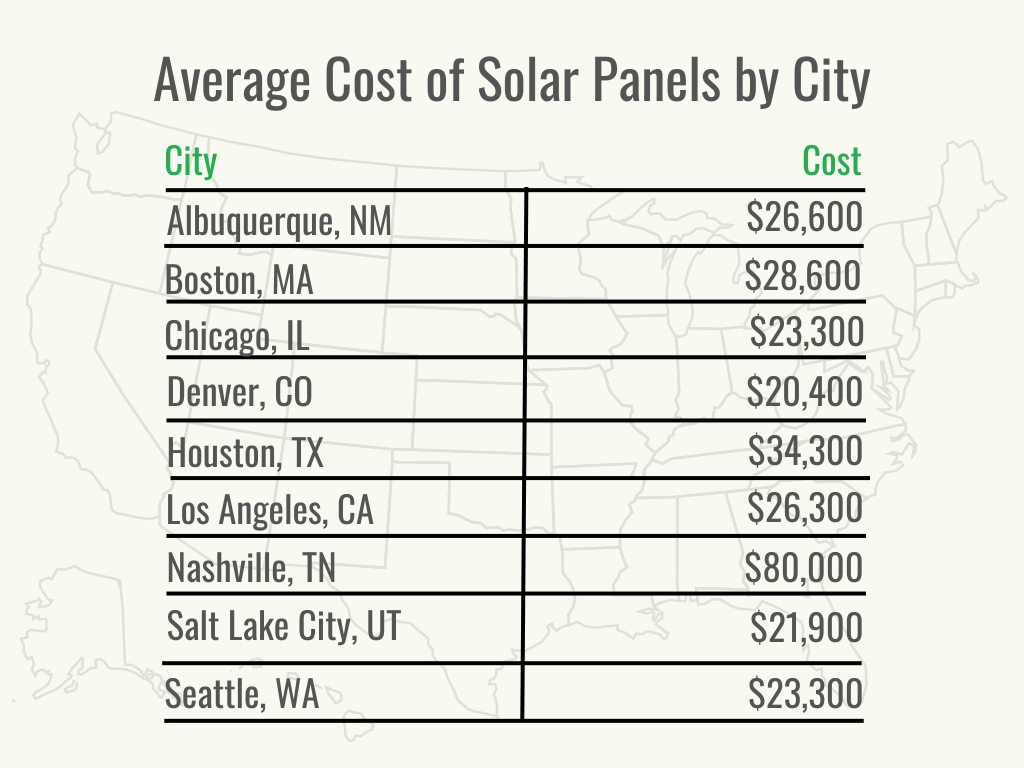
Labor
Solar panel installation averages $2.50 to $3.50 per watt. Geographic location, the location of the solar panels, and the type and size of the system will determine the installation and labor prices. The average labor cost is around $0.50 per watt and can vary due to the size and location of the solar panel system. On average, labor costs make up approximately 15 percent of the price to install solar panels.
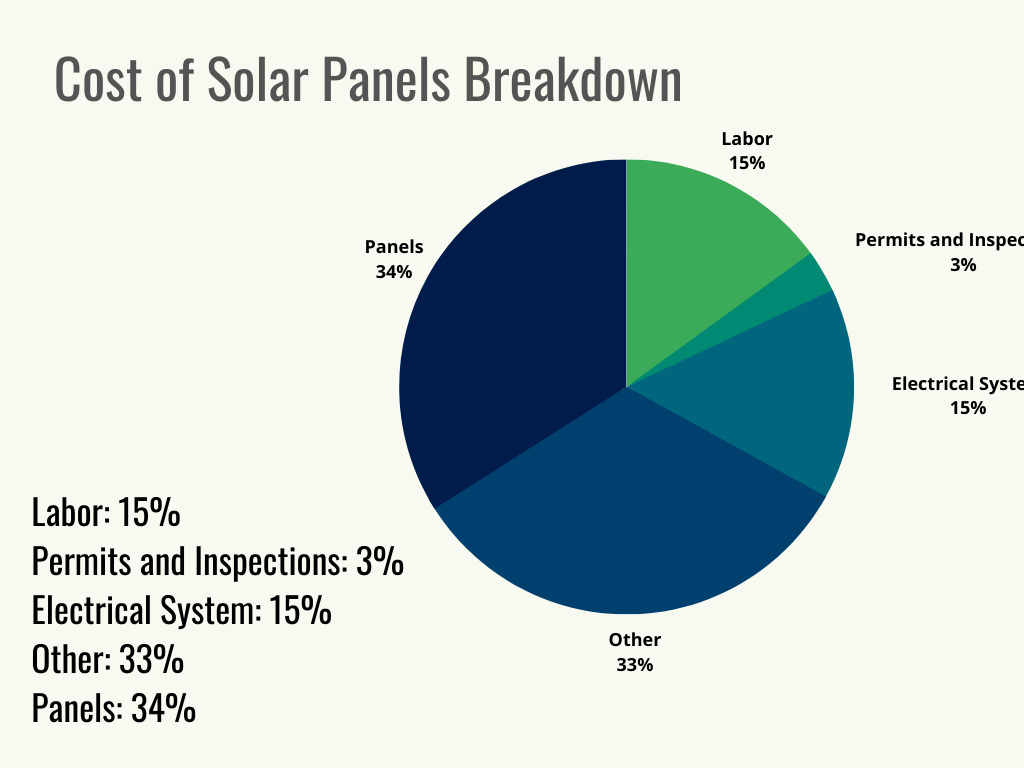
Permits and Inspections
Required permit prices can vary depending on city and state ordinances. Homeowners can plan on permit and inspection fees to take up 3 percent of the overall budget. These prices are usually rolled into the overall cost of an installation estimate. On average, permit and inspection costs around $450 in total.
Additional Costs and Considerations
When budgeting to cover the cost of solar panels, homeowners will often have additional factors to consider. These include the choice between solar panels and solar shingles, backup battery installation, operational costs, federal and state incentives, electricity use, and financing options.
Solar Panels vs. Solar Shingles
Although solar panels are usually the most common choice when it comes to solar roofs, they’re not the only options. Solar shingles are installed directly on top of the existing roof and can help protect the roof while also producing power for the home. Solar shingles are better at blending into the home and are the more attractive option, but that aesthetic benefit comes at a cost. While solar panels typically cost between $18,100 and $35,064, solar shingles cost $23,000 to $52,000 for materials and installation. That price range is higher for certain manufacturers; for example, Tesla solar shingles cost $40,000 to $80,000 for materials and installation.
Backup Battery Installation
With a traditional power system, a home may lose electricity during a storm or other extreme weather event (or, in some cases, because a curious squirrel damages some equipment). Homeowners whose homes are powered by solar panels can avoid this electrical interruption by installing an additional battery to store excess power for times when the traditional power supplier has an interruption. Additionally, a backup battery can come in handy for homeowners who live in states with less sunlight in winter months—they can store excess power and use it when their solar panel system isn’t producing enough energy to meet the home’s electrical needs. The cost to add a backup battery ranges between $300 and $20,000, with the average model costing $10,000. This does not include labor to install the battery.
Operational Costs
Operational costs include maintenance, monitoring, and inspections. The average costs related to solar panel maintenance and repair range from $200 to $1,250, depending on the service needed. Solar panels require regular cleaning and inspections, with annual inspections ranging from $150 to $300. Homeowners may be able to learn how to clean solar panels themselves, but many will prefer to leave this task to one of the best solar panel cleaning services. Some common operational costs include the following.
| Maintenance or Repair Type | Average Cost (Labor and Materials) |
| Annual inspection | $150 to $300 |
| Cracked panel repair | $150 to $500 per panel |
| Hail damage repair | $120 to $500 per panel |
| Loose wiring repair | $100 to $200 |
| Roof repair | $800 |
| Solar panel cleaning | $150 to $750 |
| Tree trimming | $50 to $200 |
Federal and State Incentives
The Energy Policy Act of 2005 ensures that homeowners can deduct up to 26 percent of a solar panel system’s price and installation costs. In 2022, that amount was increased to 30 percent for systems installed between 2022 and 2032. This investment tax credit (ITC), along with state and local incentives, increases homeowners’ potential savings when switching to solar. Some gas and electric companies offer 10 to 20 percent rebates on installation costs. Combining the federal and state incentives, homeowners can save upward of 50 percent on the cost of solar panels. Homeowners will only be eligible for these incentives if they purchase the panels, though—not if they lease them.
Financing Options
Financing is an option when budgeting for the cost of solar panels. By taking out a loan, a homeowner may end up paying more than if they paid for the solar panels up front. Homeowners will want to weigh their options and evaluate installation estimates with financing details. Many solar panel installers also offer the option for solar leasing, where the homeowner leases the solar panels (much like they would a car) for a certain length of time, usually about 25 years. The main difference between financing and leasing is that with leasing, a third party owns them. With financing, the homeowner owns the panels and is eligible for federal and state incentives. Some pros warn against leasing, especially if the homeowner plans to sell their home before the end of the lease. If they choose financing, homeowners will want to check for options through credit unions and local lenders and make sure to ask if they’ll put a lien on the home. This can make refinancing in the future challenging.
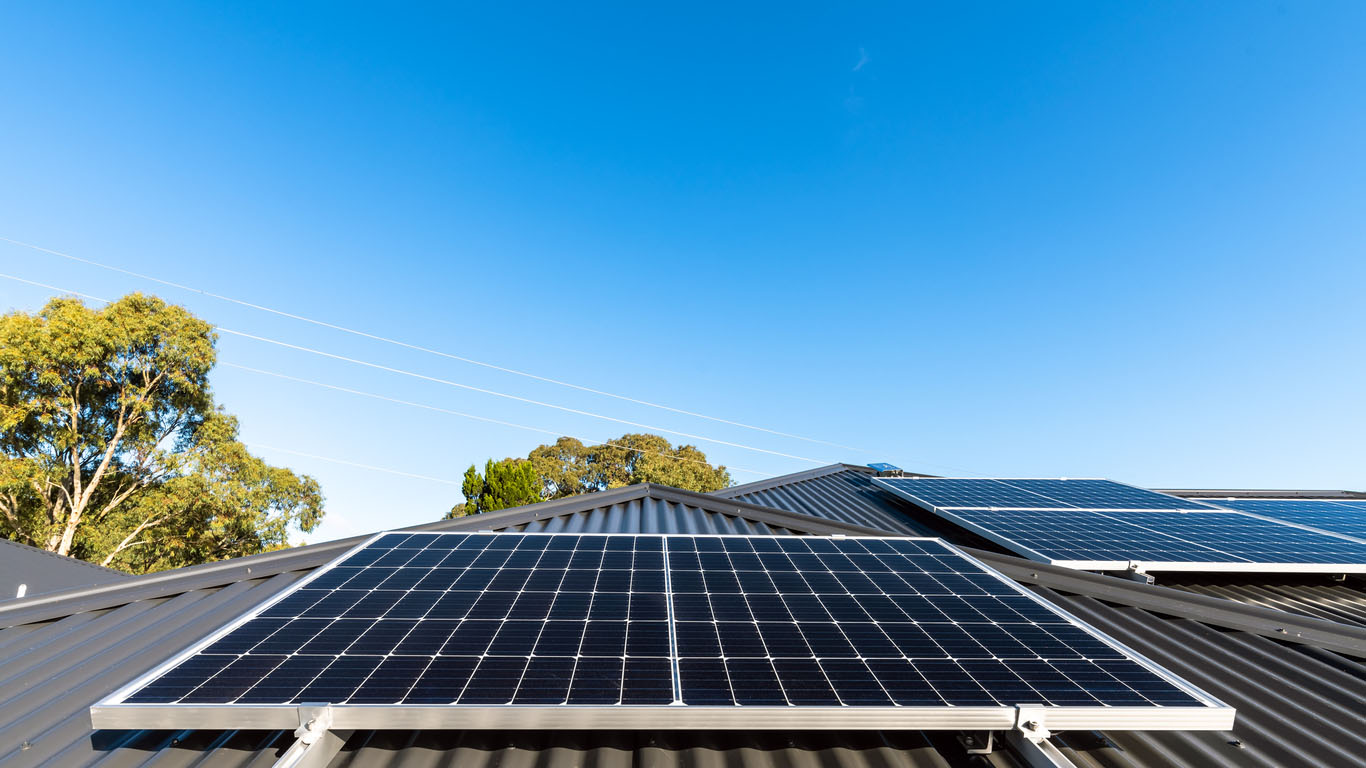
Types of Solar Panels
The type of system installed influences solar panel cost. Each type has its advantages and efficacy. Below are the three common types of solar panels for home use and their costs to help guide a homeowner’s decision.
| Solar Panel Type | Average Cost per Watt |
| Monocrystalline | $1 to $1.50 |
| Polycrystalline | $0.70 to $1 |
| Thin film | $1 to $1.50 |
Monocrystalline
Monocrystalline solar panels cost from $1 to $1.50 per watt. These space-saving panels with a black hue are considered the most efficient. They’re made from solar cells constructed from whole silicon crystals. Because of this single-cell structure, the electrons that generate electricity have more room to move and create more power per cell. Monocrystalline panels are long lasting and have a typical lifespan of up to 40 years.
Polycrystalline
Polycrystalline solar panels can run from $0.70 to $1 per watt. These panels, which may also be advertised as multi-crystalline, use crushed-up fragments of silicon, which results in a lower price point than monocrystalline panels. While these panels are a budget-friendly option, they aren’t as efficient as monocrystalline panels. This is because the crushed silicon gives the electrons less room to move, meaning slightly less energy production. These panels usually have a blue hue instead of the black hue like monocrystalline panels and have a lifespan of 25 to 30 years.
Thin Film
Thin-film solar panels average from $1 to $1.50 per watt. Thin-film panels are the most popular option since they’re flexible, lightweight, and versatile. They’re easy to mount and take less time to install, which cuts down on labor costs. However, they’re not as efficient, and more panels are required to power a home compared with the crystalline alternatives. On average, these panels also have a shorter lifespan of 10 to 20 years. They can be made from an array of photovoltaic materials organized into a thin film on a panel and layered with metal and glass or plastic. Thin-film panels might be a better choice for hotter, sunnier climates like deserts as they don’t lose as much efficiency when temperatures rise. Cadmium telluride (CdTe) is the most popular and efficient choice for thin-film solar panels, but cadmium is a highly toxic element. While there’s no harm in using these panels, homeowners will want to ensure that they’re handled by a professional and recycled properly at the end of their lifespan.
Benefits of Installing Solar Panels
There are many advantages of solar energy—some more obvious than others. First, solar panel systems can produce electricity that is 30 percent cheaper than paying for it from a utility company. Not only can a homeowner save money by installing solar panels, but they can also reduce their carbon footprint, receive tax breaks, and earn a significant return on investment for their home. For most homeowners, the benefits of solar panels make the installation cost worth it.
Reduced Carbon Footprint
If a homeowner is interested in transforming their home into a green-living sanctuary, installing solar panels is a step in the right direction. A solar panel system has the potential to reduce a home’s carbon emissions by up to 80 percent compared to fossil fuels. By powering their home with a renewable energy source, homeowners can achieve peace of mind by knowing they’re not contributing to the use of nonrenewable fossil fuels and harmful greenhouse gas emissions.
Lower Utility Bills
One of the biggest solar panel benefits is the reduced energy costs a homeowner can enjoy. Even though the up-front cost of solar panels may be high, there is an advantage of saving on utility bills after installation. A solar panel system can cut a home’s electric bills by up to $650 and $1,000 per year. If a homeowner owns their home for 25 years, that could add up to a savings of $16,250 to $25,000. If the home happens to use less power than the panels produce, the energy will be routed to the rest of the power grid and the homeowner may receive a credit on their energy bill. The table below shows the average annual electric bill savings for homeowners in different areas.
| State | Average Annual Savings |
| Arizona | $1,400 |
| California | $2,900 |
| Colorado | $1,600 |
| Florida | $1,500 |
| Maine | $2,300 |
| Massachusetts | $2,900 |
| New York | $2,300 |
| Texas | $1,500 |
| Washington | $1,100 |
Tax Breaks
Homeowners can save even more money with federal and state tax breaks. According to the Office of Energy Efficiency & Renewable Energy, the federal investment tax credit allows homeowners to save up to 30 percent on installing a solar panel system in their homes between the 2022 and 2032 tax years. For systems installed between 2017 and 2021, the tax credit amount will be 26 percent. After 2032, the solar panel tax credit amount will gradually decrease before expiring in 2035, unless Congress passes a renewal. Below is a table showing the tax credit amount by installation year.
| Installation Year | Tax Credit Amount |
| 2017 to 2021 | 26 percent |
| 2022 to 2032 | 30 percent |
| 2023 | 26 percent |
| 2034 | 22 percent |
Some states provide tax credits for homeowners who install solar panels, and others offer a permanent tax exemption for solar goods for the home. Some, like Maryland, offer several different incentives. Homeowners can check with their state’s energy administration to see whether they are eligible for any additional tax credits or incentives
Return on Investment
The size of the solar panel system and the local cost of electricity will affect the return on investment (ROI). The average time it takes for a homeowner to break even (also called the payback period) is 8.7 years. Homeowners may be able to decrease their payback period by taking advantage of local and federal incentives and tax breaks. Solar panels can also increase a home’s value, as many eco-conscious buyers are looking to buy a house with solar panels already installed.
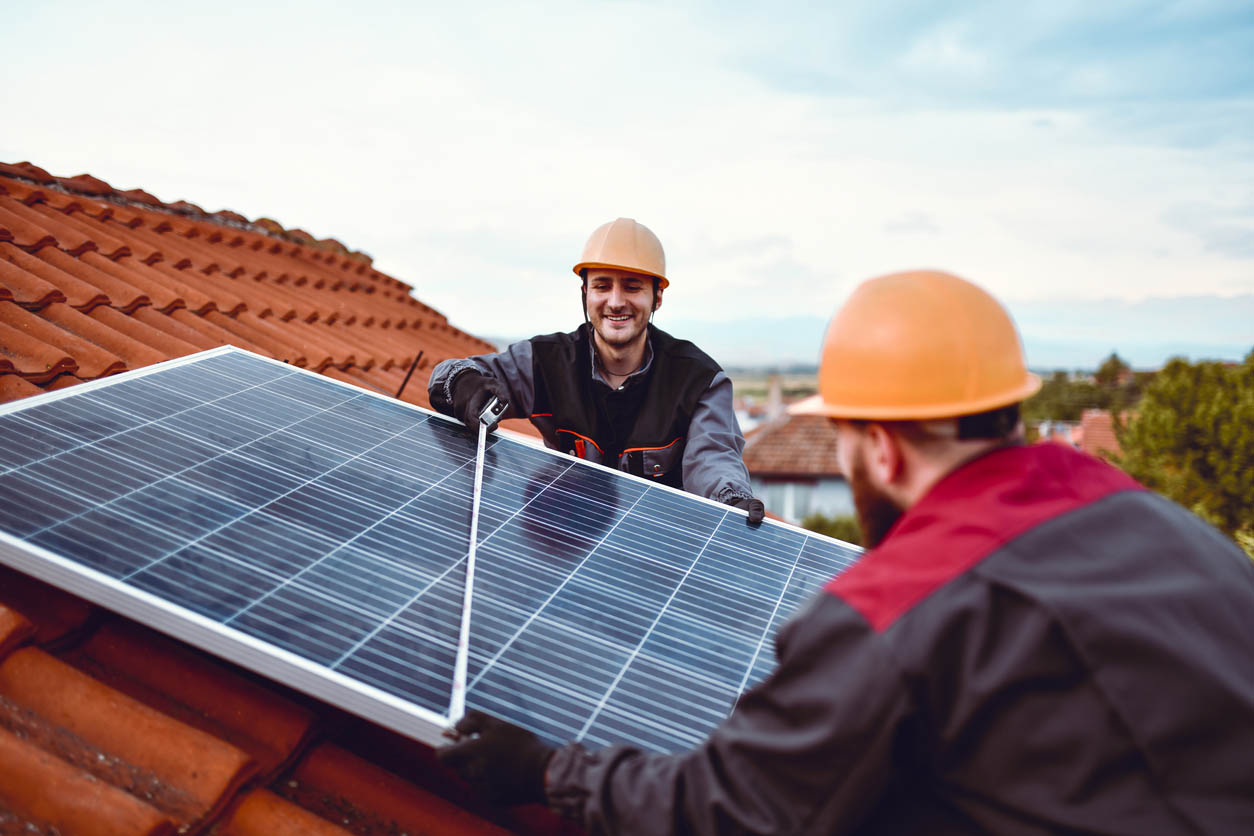
Solar Panel Installation: DIY vs. Hiring a Professional
Considering labor only makes up around 15 percent of the total solar panel installation cost, homeowners may find that they will not save very much money by doing it themselves. For a 5kW system, the labor costs may come in around $2,250 out of $15,000 total, compared to $5,100 for the panels and $2,250 for the electrical system. Hiring a professional to install solar panels on a home has many benefits that justify their cost. Professionals can buy high-quality materials directly from the manufacturer and get lower prices than a homeowner. A professional has the knowledge and experience to develop a solar panel design, know all about the solar panel federal tax credit and state credits, and navigate the permit-pulling process. Additionally, the solar panel manufacturer may require the panels to be installed by a professional in order for any warranties to be valid. In general, it is well worth a homeowner leaving the highly technical solar panel installation to the professionals.
How to Save Money on the Cost of Solar Panels
The cost of solar panels can be expensive, and the additional costs associated with the project can quickly add up. One way to save money is to install the least expensive panels, but there are other ways to save money without skimping on quality.
- Get multiple quotes. By shopping around different solar companies, you can find the right price for you and your budget. A good way to find a professional is to search for “solar providers near me.”
- Look for incentives. Federal and state tax breaks along with utility company discounts and incentives for installing solar panels can increase your overall savings.
- Use the PACE Program. The Property Assessed Clean Energy (PACE) model is a program that enables homeowners to finance the costs of improvements, including solar panels, and pay back the costs via a property assessment.
- Look into financing options. If you don’t have the savings to pay for the solar panels up front, it’s wise to look into the different financing options you can qualify for. The best solar panel loans are available from solar companies and traditional lenders, and homeowners may be able to choose a lease option instead.
- Opt for lower-cost materials. Polycrystalline solar panels tend to cost less than monocrystalline and thin-film panels, making them a good option for those on a limited budget. You can also save by choosing fixed mounting rather than adjustable.
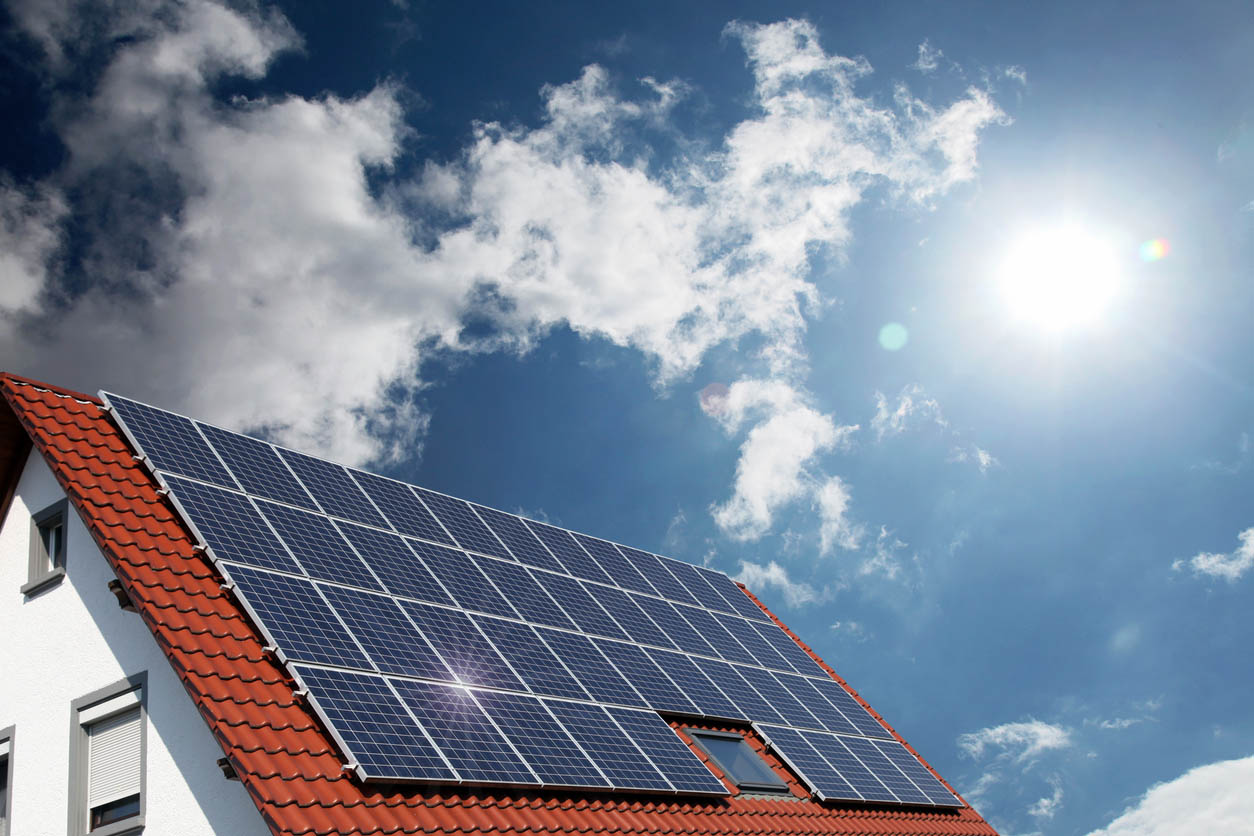
Questions to Ask About Solar Panel Installation
Asking a solar panel installation professional the right questions can help minimize miscommunication, save money, and get the right solar panel system for your home. Here are some questions to ask about the cost of solar panels.
- What licenses and certifications do you have?
- How many solar panel installations have you completed?
- Who will complete the installation?
- How long will the installation take?
- Do you have references?
- Will you complete the paperwork for permits and utility interconnection?
- What types of solar panels do you use?
- Do you offer any type of monitoring for your solar panels?
- Do you install both on- and off-grid systems?
- What are your available financing options?
- What are your standard warranties on equipment, installation, and power production?
- How do you determine pricing?
- What size solar panel system do you recommend for my home?
- Can my current roof support the solar panel system or will modifications be needed?
- Where is the optimal placement for the solar panels?
- Will I be able to expand my system in the future if my energy needs increase?
- How can I take advantage of tax breaks and incentives?
- How much can I expect to save?
- What happens if I sell my home?
FAQs
Deciding on the right solar panel system while keeping the cost down can be a daunting process. Below are some frequently asked questions about the cost of solar panels to help guide homeowners in their decisions.
Q. Is it expensive to install solar panels?
The average cost for solar panel system installation can run between $18,100 and $35,064, with an average cost of $26,579. Homeowners can save by taking advantage of federal and state tax credits and incentives. In general, the savings, increased home value, and return on investment outweigh the up-front costs.
Q. How can I pay for solar panels?
There are several different ways to pay for solar panels, including the following.
- Pay in full: You will pay the full amount for the system and installation and have no monthly payments besides any remaining electric bill charged. You will own the system fully from day 1.
- Solar loan: You borrow the money to pay for the system and installation and repay it in monthly installments, sometimes with added interest. Putting down a lump-sum payment at the time of installation can help reduce monthly payments. With a loan, you own the solar panels.
- Solar lease or power purchase agreement (PPA): Once the solar panel system is installed on your roof, the solar company will continue to own and operate the panels, and you will pay for the electricity they produce.
Q. How much energy can I save with solar panels?
The average yearly savings on energy costs are between $650 to $1,500. Homeowners can generally expect to save up to 50 percent on their monthly energy bills.
Q. How long will my solar panels last?
Solar panels can last up to 25 to 35 years with proper maintenance and cleaning.
Q. Do solar panels work at night?
Solar panel roofing does not generate power at night. The panels need sunlight to function.
Q. How does net metering work?
When you have a solar panel system, your power production may exceed your home’s energy needs. If this happens and your state has a net metering policy, you can sell that additional power to the utility company and it can use it to power other homes and businesses in the area. In exchange, you will be credited for that energy, which means you can draw on it later as needed without needing to pay for nonrenewable energy from the utility company. Net metering can help homeowners cut their overall electricity costs without needing to pay extra to install a battery to store any additional power produced. However, not all states offer net metering, so it’s a good idea to check before installing solar panels on your home.
Q. Does homeowners insurance cover solar panels?
In general, homeowners insurance does cover solar panels—but it will depend on the cause of the damage. Most homeowners insurance policies will cover hail damages and other similar events (less the deductible), but it will not cover damage caused by homeowner negligence. It’s advisable to check your homeowners insurance policy to ensure you understand what is and is not covered.
Sources: HomeAdvisor, Angi, HomeGuide, Fixr

